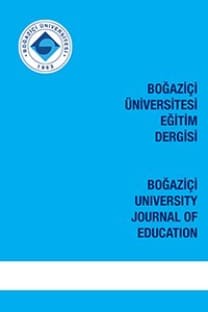All Englishes Are Equal (But Some Are More Equal Than Others)
Expanding Circle, English as a Lingua Franca, English-medium instruction, multilingualism, native speaker, outer circle
All Englishes Are Equal (But Some Are More Equal Than Others)
Expanding Circle, English as a Lingua Franca, English-medium instruction, multilingualism, native speaker, outer circle,
___
- Bayyurt, Y. (2012). Proposing a model for English language education in the Turkish sociocultural context. In Y. Bayyurt & Y. Bektaş-Çetinkaya (Eds.), Research perspectives on teaching and learning English in Turkey: Policies and practices (pp. 301-312). Frankfurt am Main: Peter Lang.
- Blommaert, J. (2010). The sociolinguistics of globalization. Cambridge: Cambridge University Press.
- Edwards, A. (2010). Dutch English: Tolerable, taboo, or about time too? English Today, 101, 26(1), 19-24.
- Ferguson, C.A. (1981). Foreword. In B. B. Kachru (Ed.), The other tongue: English across cultures (p. xii-xvii). Urbana: University of Illinois.
- Jenkins, J. (2007). English as a lingua franca: Attitude and identity. Oxford: Oxford University Press.
- Jenkins, J. (2009). English as a lingua franca: interpretations and attitudes. World Englishes, 28(2), 200–207.
- Kachru, B. (1985). Standards, codification and sociolinguistic realism: The English language in the outer circle. In R. Quirk & H. Widdowson (Eds.), English in the world: Teaching and learning the language and literatures (pp. 11-36). Cambridge: Cambridge University Press.
- Kachru, B. (2005). Asian Englishes. Beyond the canon. Hong Kong: Hong Kong University Press.
- Kortmann, B., & Lunkenheimer, K. (Eds.) (2011). The Electronic World Atlas of Varieties of English [eWAVE]. Leipzig: Max Planck Institute for Evolutionary Anthropology. http://www.ewave-atlas.org/
- Rajadurai, J. (2005). Revisiting the concentric circles: Conceptual and sociolinguistic considerations. Asian EFL Journal, 7(4), 111-130.
- Schmied, J. (2009). East African Englishes. In B. B. Kachru, Y. Kachru, & C. L. Nelson (Eds.) The handbook of World Englishes (pp.188-201), Chichester: Wiley-Blackwell.
- Schneider, E.W. (2010). Developmental patterns of English: Similar or different? In A. Kirkpatrick (Ed.), The Routledge handbook of World Englishes (pp. 372-384). London: Routledge.
- Seidlhofer, B. (2011). Understanding English as a lingua franca. Oxford: Oxford University Press.
- van Splunder, F. (2013). Whose language is it anyway? ELF and the absence of the native speaker. In Y. Bayyurt & S. Akcan (Eds.), Proceedings of the Fifth International Conference of English as a Lingua Franca, 24-26 May 2012 (pp. 386-393), Istanbul: Boğaziçi University.
- Widdowson, H.G. (1994). The ownership of English. TESOL Quarterly, 28(2), 377-89.
- ISSN: 1300-9567
- Yayın Aralığı: 3
- Başlangıç: 1976
- Yayıncı: Boğaziçi Üniversitesi
First Stage in the Construction of METU Turkish English Exam Corpus (METU TEEC)
All Englishes Are Equal (But Some Are More Equal Than Others)
Building a Singapore Learner Corpus of English Writing for Pedagogy
Zhang RUİHUA, Guo LİBO, Hong HUAQİNG
UWC Schools: An Ideal ELF Environment?
Veronika NOVOTNÁ, Jirina DUNKOVA, David GROSSNER
Exploring Non-Native English Teachers’ Professional Development Practices
